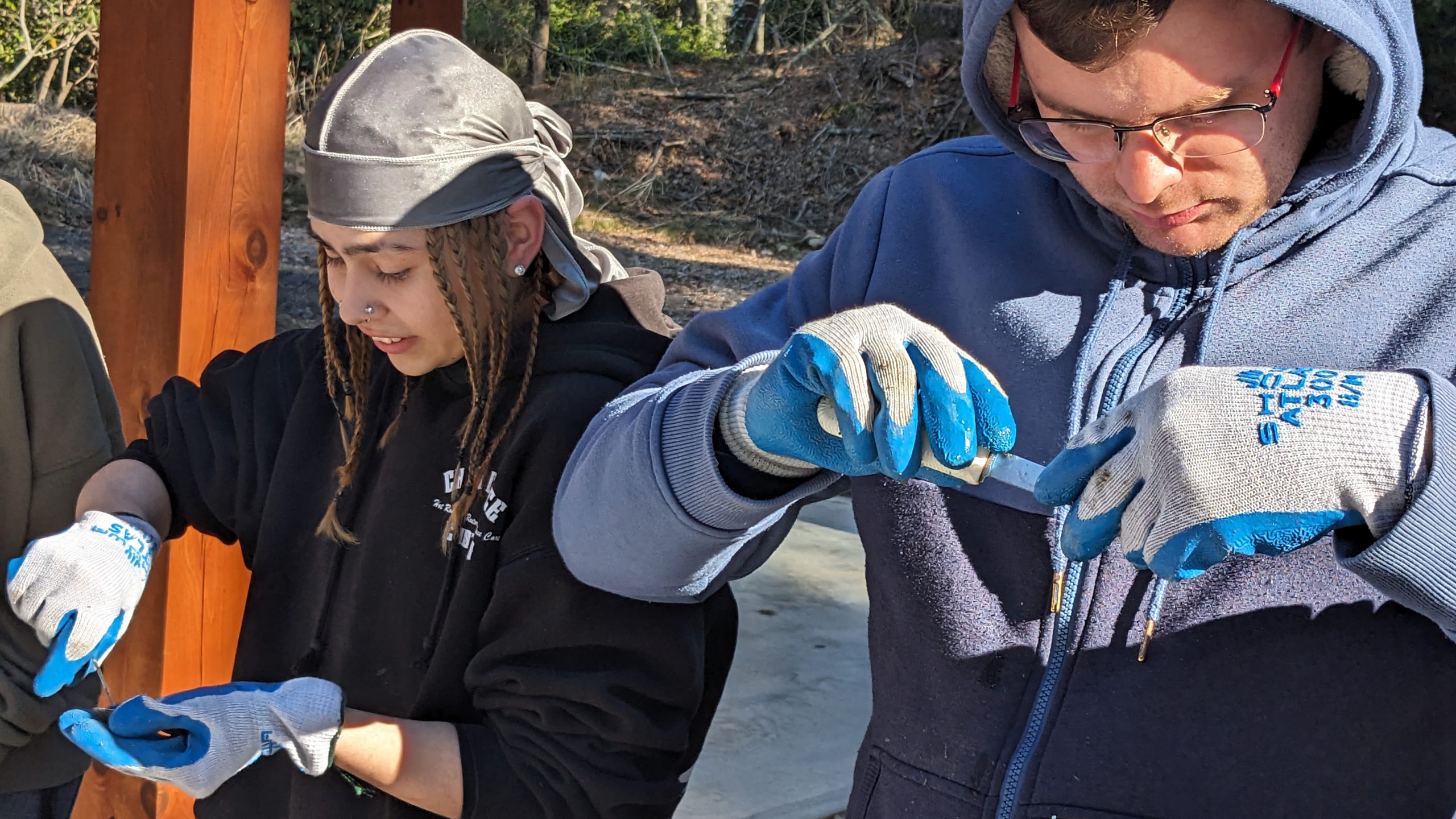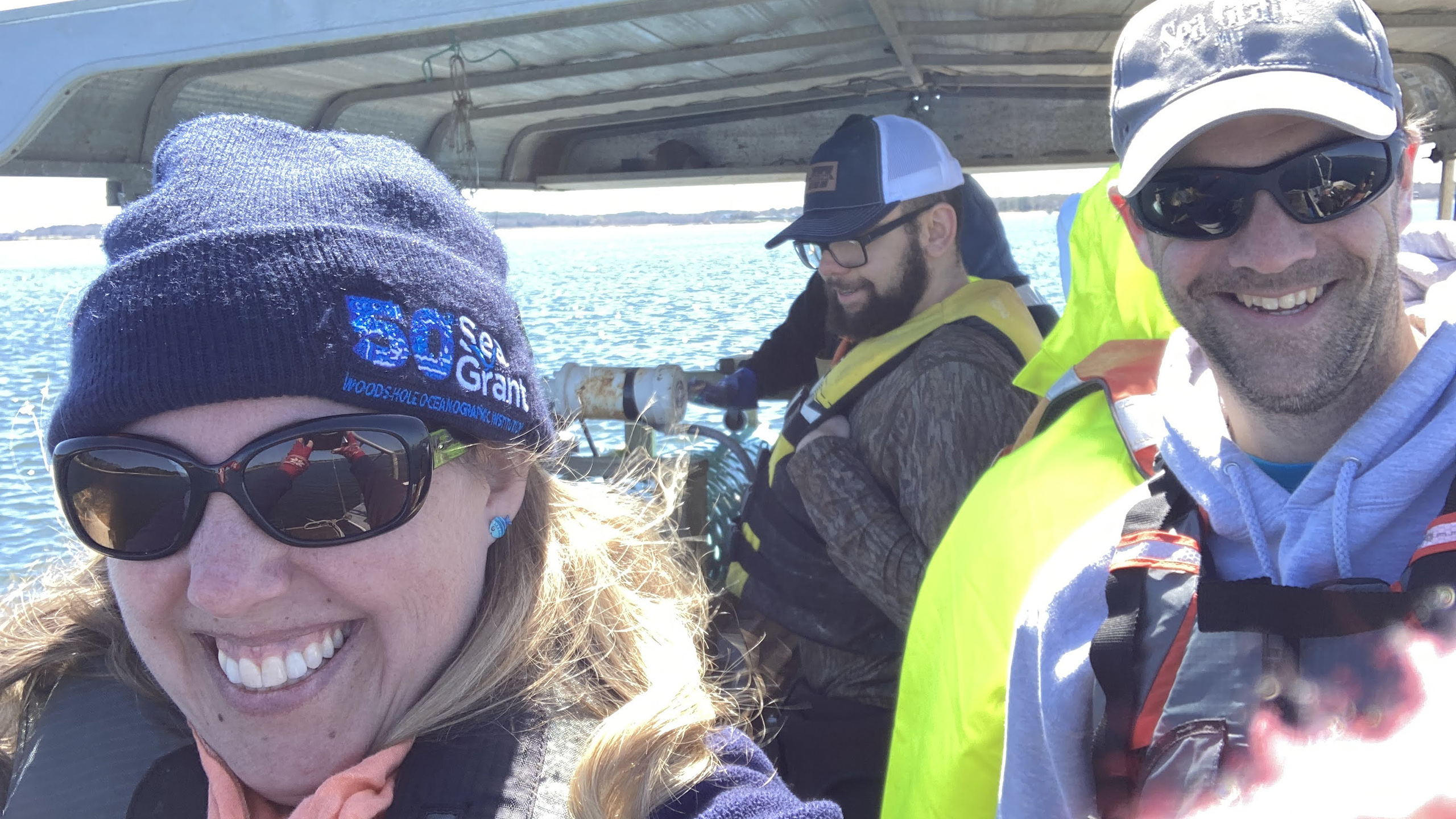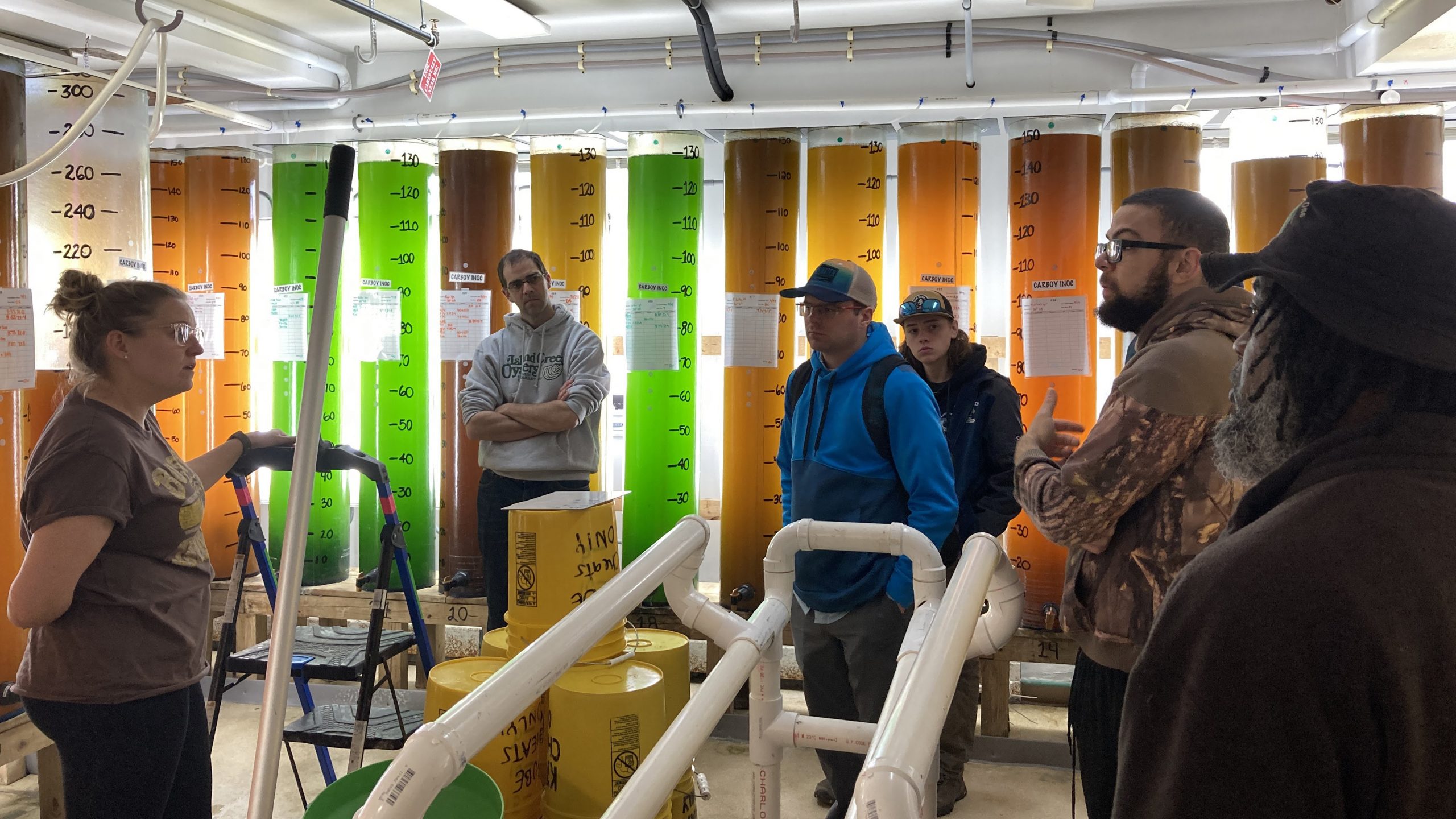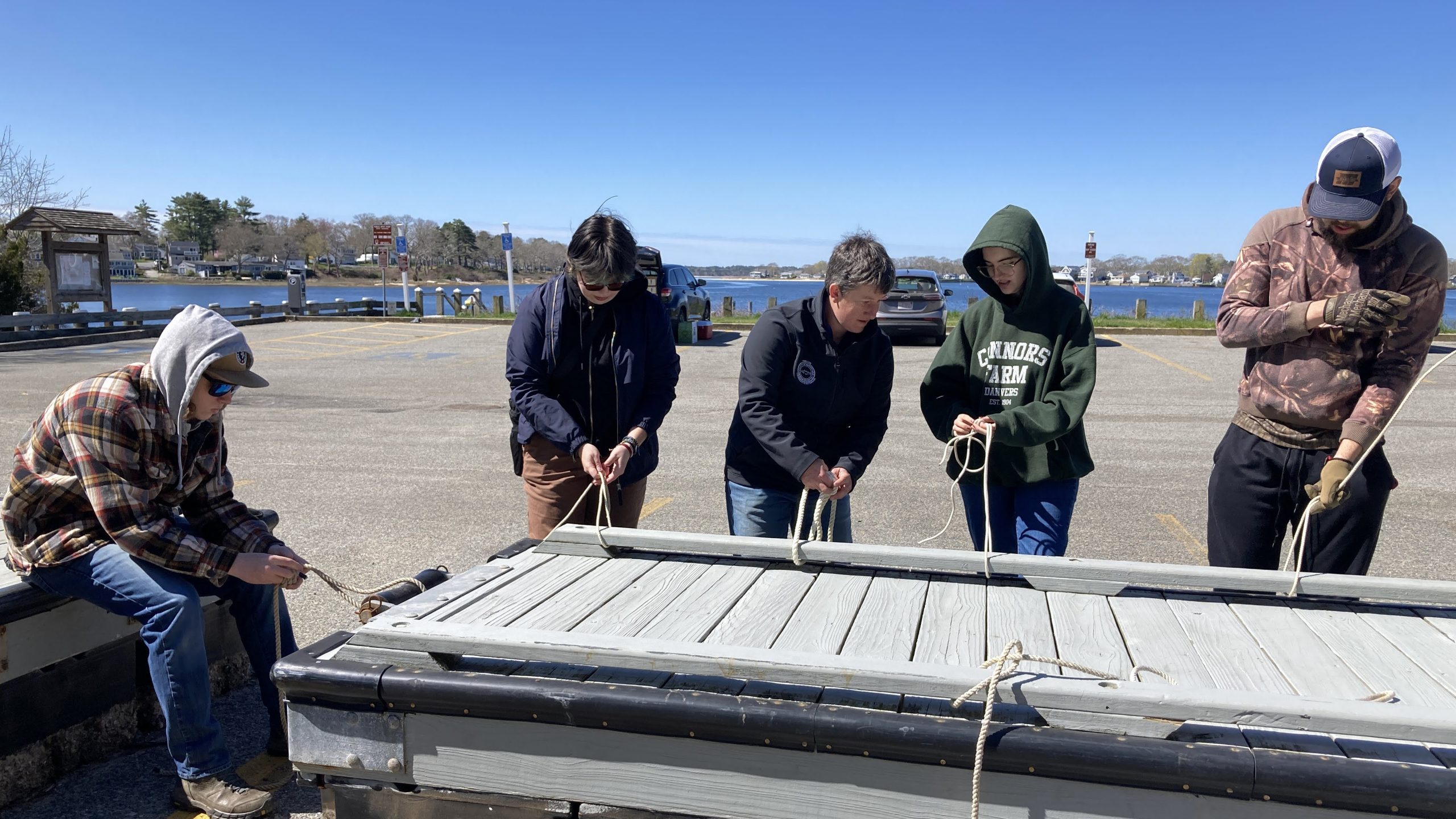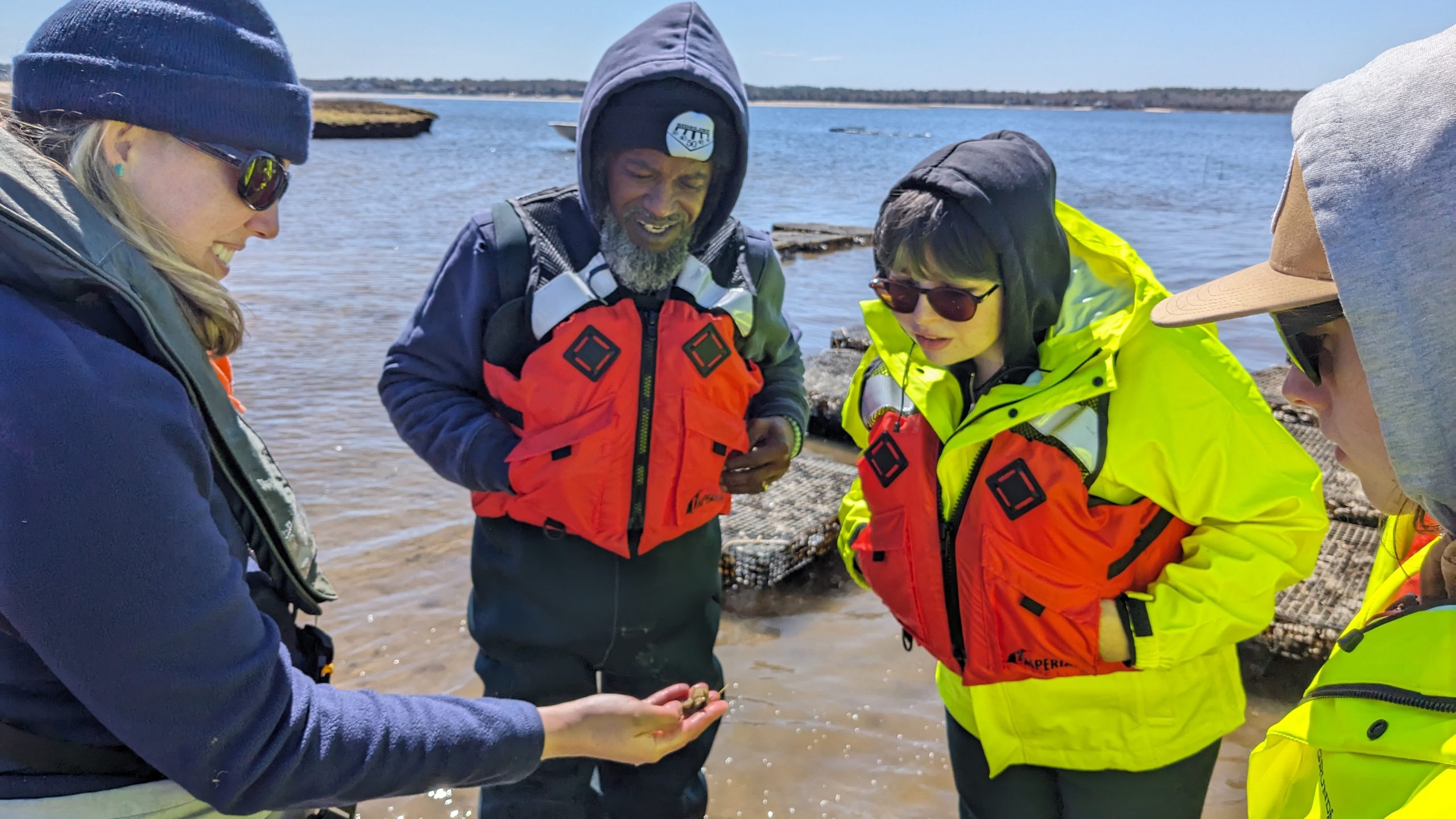Cultivating the Future of Shellfish Farming
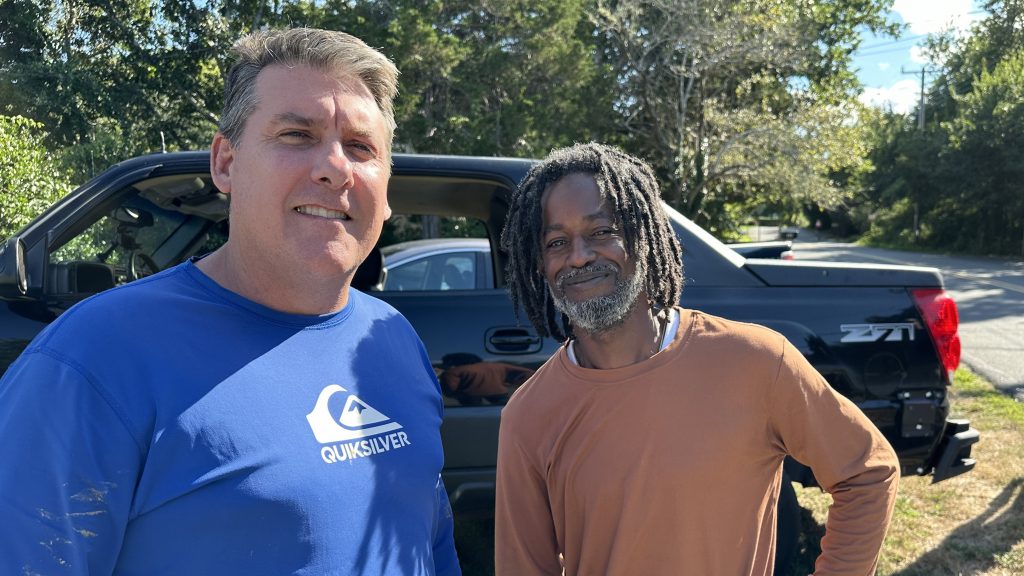
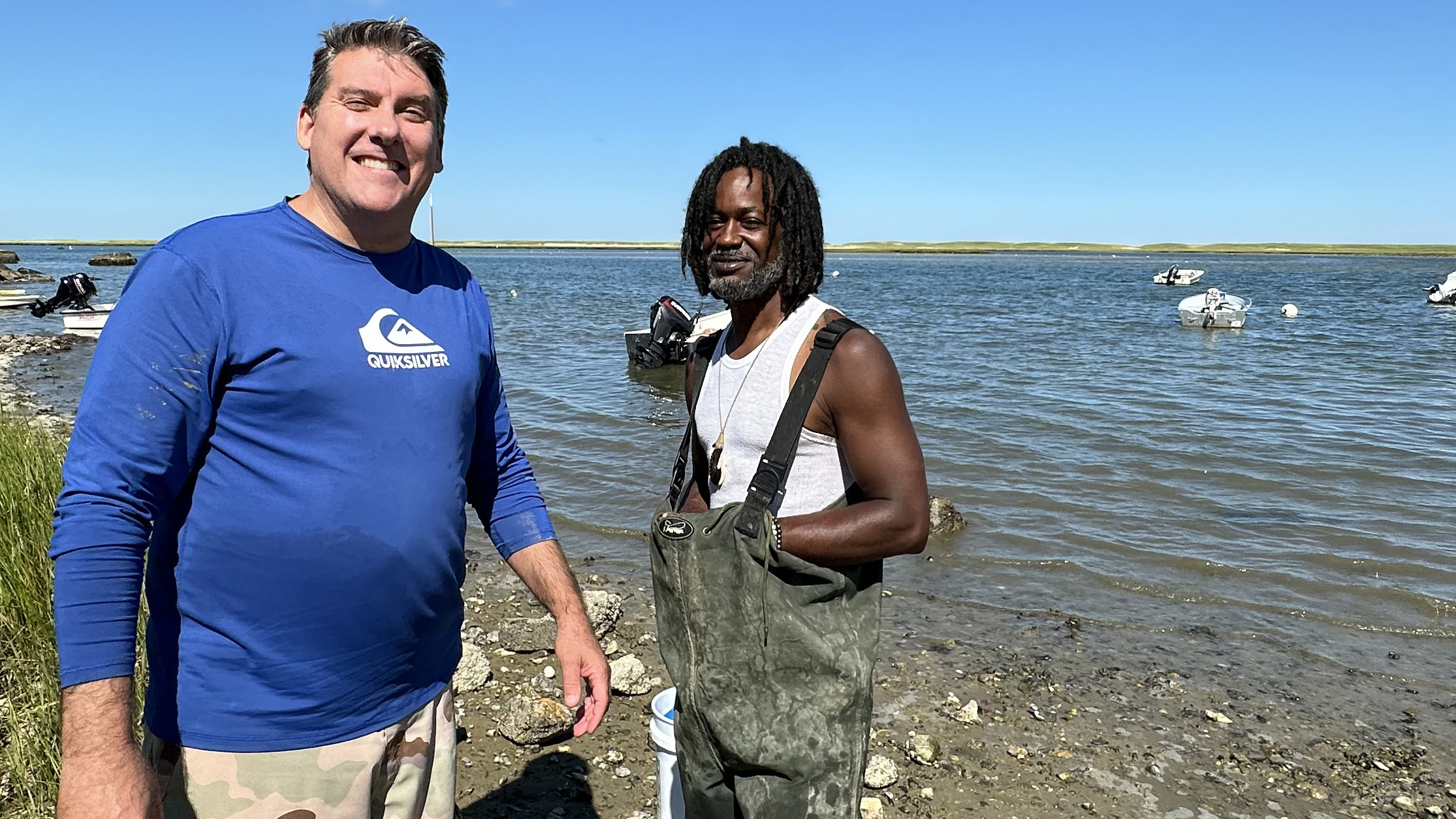
On a perfect mid-August afternoon, Todd Gelinas and Adrian Wallace motor their work skiff back to a small beach at the end of Tonset Road in Orleans. Newly-minted business partners, they are returning from tending oysters at Stony Island Farm, a two-acre oyster lease just around a bend in the Cape Cod shoreline in the system of coves and inlets around the Nauset spit. With them are Danny Badger and Josh Reitsma, aquaculture extension agents with MIT Sea Grant and WHOI Sea Grant, respectively, who joined them to check up on the oysters and to check in on the partnership – a result of a newly piloted Sea Grant aquaculture internship program.
Just a few months earlier, Adrian had been working as a driver, delivering seafood from a refrigerated truck for a company out of New Bedford, and wondering what his next step would be. "I was in a bit of a lull," he says. When his wife spotted a Facebook post about a new aquaculture internship that was paying people to train for jobs in aquaculture, she suggested he try it out.
“I'm looking it up: ‘aquaculture,’" recalls Adrian. "Oh, growing oysters. Why not, you know? It might be good.’” Having spent more than a dozen years as a marine carpenter, building piers and docks by hand, Adrian loved being on the water and wanted to get back to it.
He submitted an application and was accepted to the internship, a collaborative pilot project led by Massachusetts’ two NOAA-funded Sea Grant programs: MIT Sea Grant and WHOI Sea Grant. The program’s goal is to raise the visibility of shellfish aquaculture as a career path and to help sustain and grow the industry by training workers.
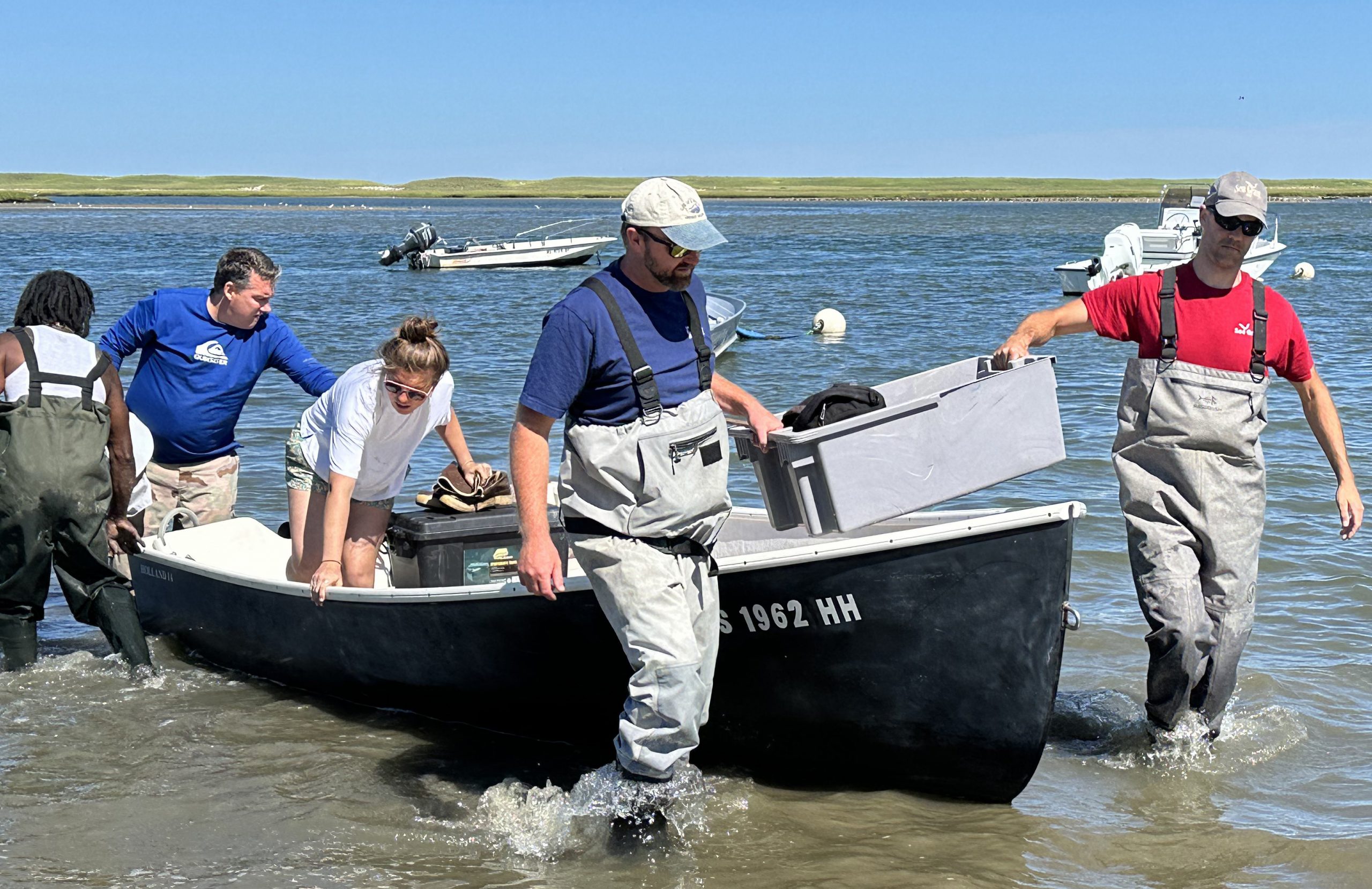
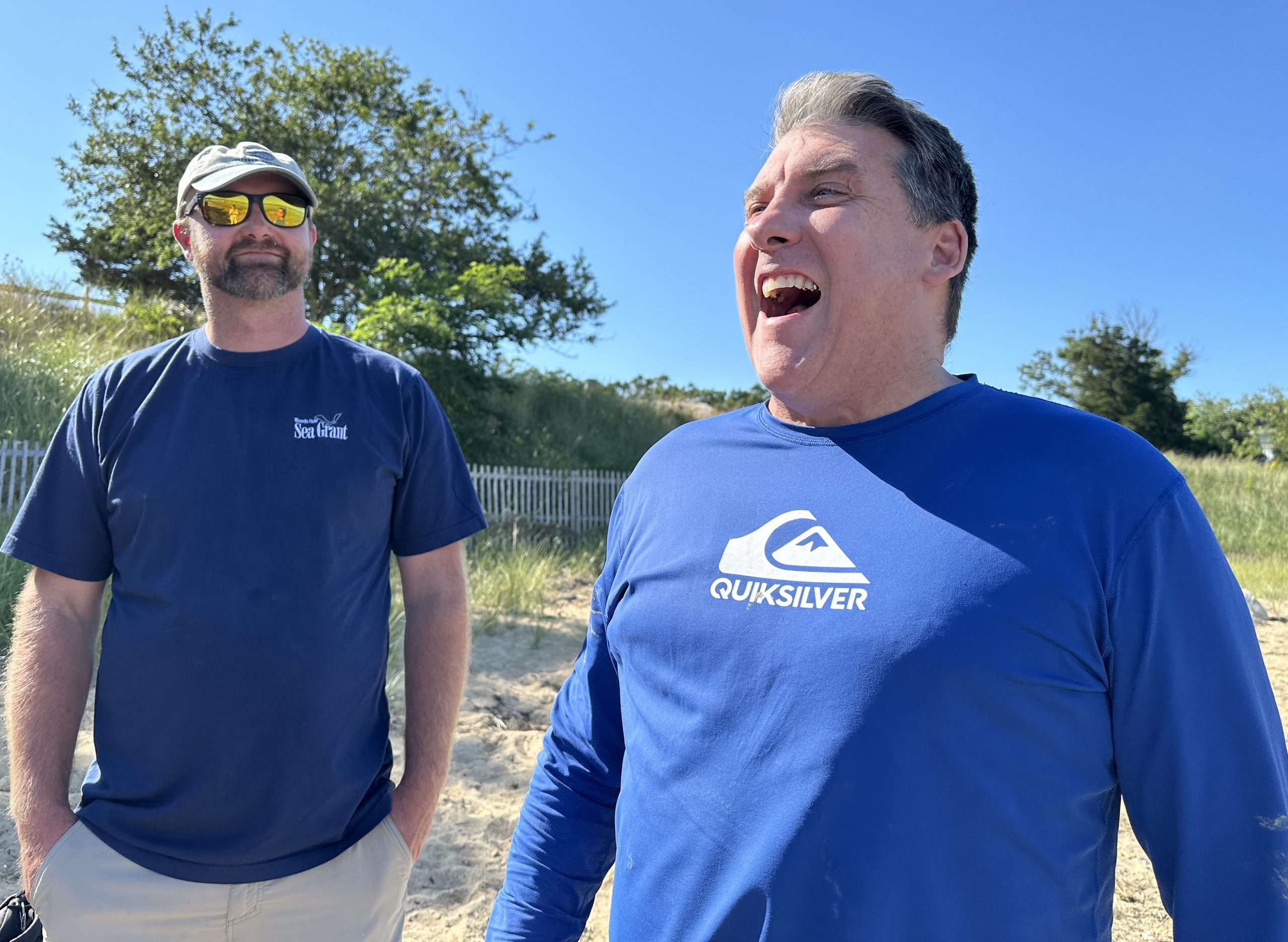
Four years ago, Todd Gelinas established Stony Island Farm, a venture in oyster aquaculture on a patch of water not far from the beach he played on as a kid. A “recovering” investment banker who spent 30 years working in Asia, Todd initially started out as a gentleman farmer, not intent on establishing a business as a going concern. “It wasn't to make money. It was to see if we could … produce a first-rate oyster.”
The farm began as a half-acre site between Woods Cove and Town Cove in a spot where the water comes in through an inlet, circulates around a marsh and has a good turnover. “The oysters took off. They did really well,” says Todd. After farming for two years, he expanded the farm to two acres. But four years into his aquaculture experiment, he thought he might be done. “I just turned 60, and it's too much work for me, and I was considering phasing it out. And then, by chance, I met Danny [Badger] and the Sea Grant program.”
Aquaculture Internships for Massachusetts
The idea for the Aquaculture Internships for Massachusetts program originated with Danny, who collaborated with WHOI Sea Grant marine extension team Abigail Archer, Josh Reitsma, and Rachel Hutchinson to make it a reality. “As I talked with a variety of farmers, they often referenced the challenge of finding workers who would stick around for more than a year or two,” says Danny.
Danny’s dream was to find workers from communities which, culturally, relied on seafood but were not generally aware of farm-raised shellfish in Massachusetts. “I wanted to create a feedback loop where the aquaculture industry could expand their market reach into those seafood-consuming communities, and also find a workforce.”
As partners in the internship program WHOI Sea Grant’s marine extension team has deep knowledge and experience working with growers on and around Cape Cod, the epicenter of shellfish farming in Massachusetts. While shellfish aquaculture represents a $32.6 million industry for the Commonwealth, many of the farmers are at or approaching retirement age.
“Visibility is a major challenge for the industry – a lot of people are not aware it exists, including those looking for work,” says Josh. “There’s a lot of concern about where the next generation of farmers is coming from.”
Together, the Sea Grant teams organized the internship program to recruit a cohort of potential employees and train the candidates in basic industry skills. “Planning for this internship was huge,” says Abigail. “We wanted to make it as accessible and equitable an opportunity as possible.” That included finding housing during different phases of the internship, which was made possible with the support of several non profits, private businesses and individuals.
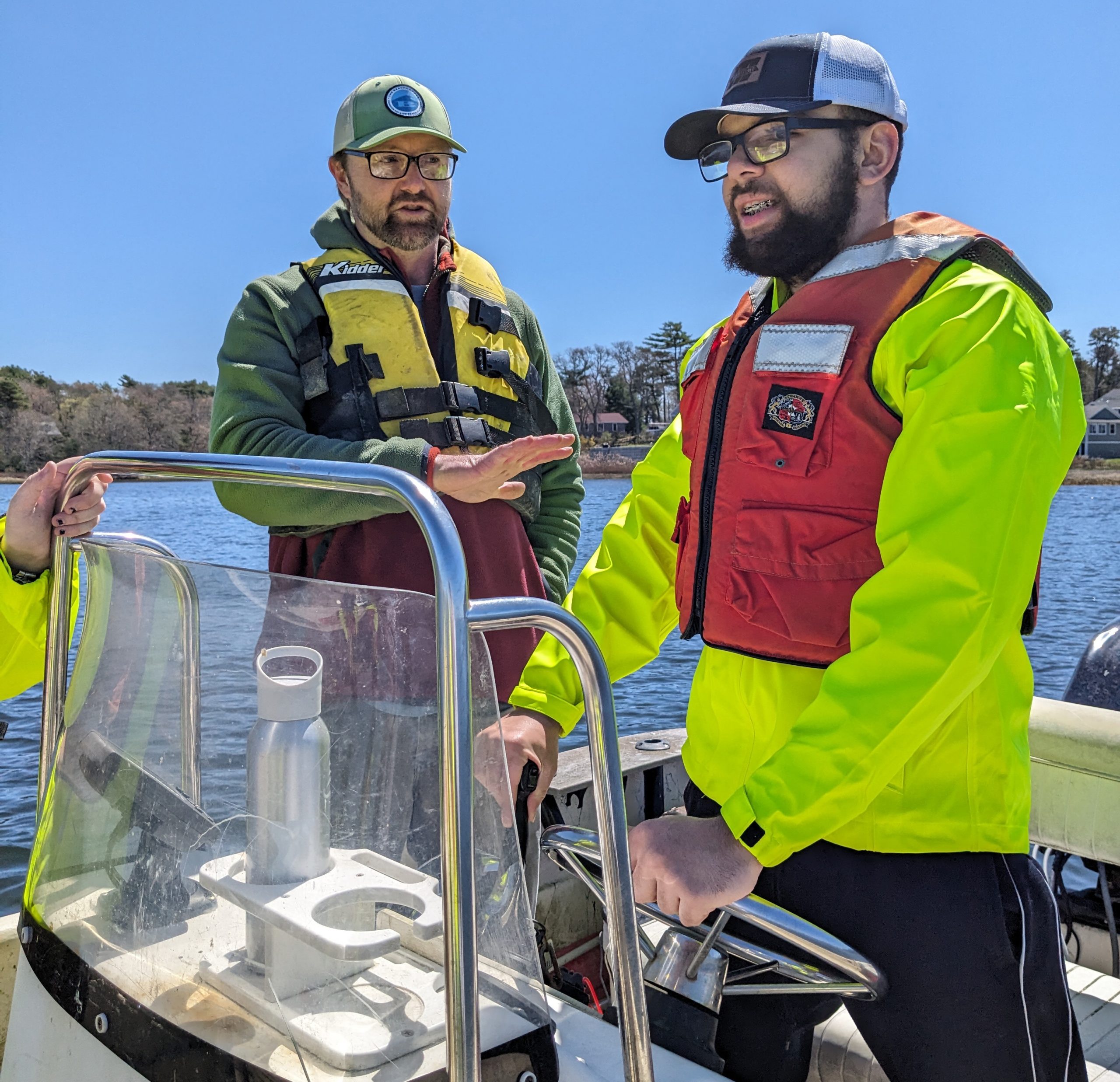
With funding from the National Sea Grant Program, the internship pays recruits for their training and supports their housing and transportation needs. Kicking off in April 2024, the program included a week of online training through the East Coast Shellfish Growers Association certification program and the OSHA-10 workplace safety course; a week of in-person training at Wildlands Trust in Plymouth, and three one-week rotations at working farms, hatcheries, and municipal shellfish departments. If a match could be made between a farm and an intern, the program would also support their salary for a six-month work placement.
“We knew recruitment was going to be difficult, so we really put a lot of time and energy into it,” says Abigail. “We had capacity for 12 trainees. We recruited and accepted 10 and ultimately eight showed up for the program.” The team also recruited “host sites” – farms that were willing to take trainees for week-long rotations.
During the in-person training week, the recruits received training in first aid/CPR, small boat handling, and US Coast Guard auxiliary boater safety training, and learned about the oyster life cycle and propagation methods during a visit to Island Creek Oysters hatchery in Duxbury. They had a workshop on basic oyster and clam biology and how to shuck an oyster led by Dale Leavitt, a farmer from Fairhaven and former Sea Grant extension agent, and made field trips to two farms in Wareham. Growers from the host sites had opportunities to meet the interns over lunch and perhaps get a sense of who might be a good fit for their farms.
As a host site for the program, Todd had an idea of the kind of person who would be a good fit for Stony Island Farm. Rather than a farmhand, he knew he was looking for a partner. His thinking was grounded in observations he made working in Asia. “In Asia, there’s more of a communal approach to farming rice, for example, where many hands are needed to plant and harvest the crop and everyone shares in the bounty.” Todd took a similar approach when it came to growing his business: “I figured partnership is the way to go.”
By the second week of the program, Adrian and Todd had already made a connection and were waiting for Todd’s rotation week to bring him to Stony Island Farm.
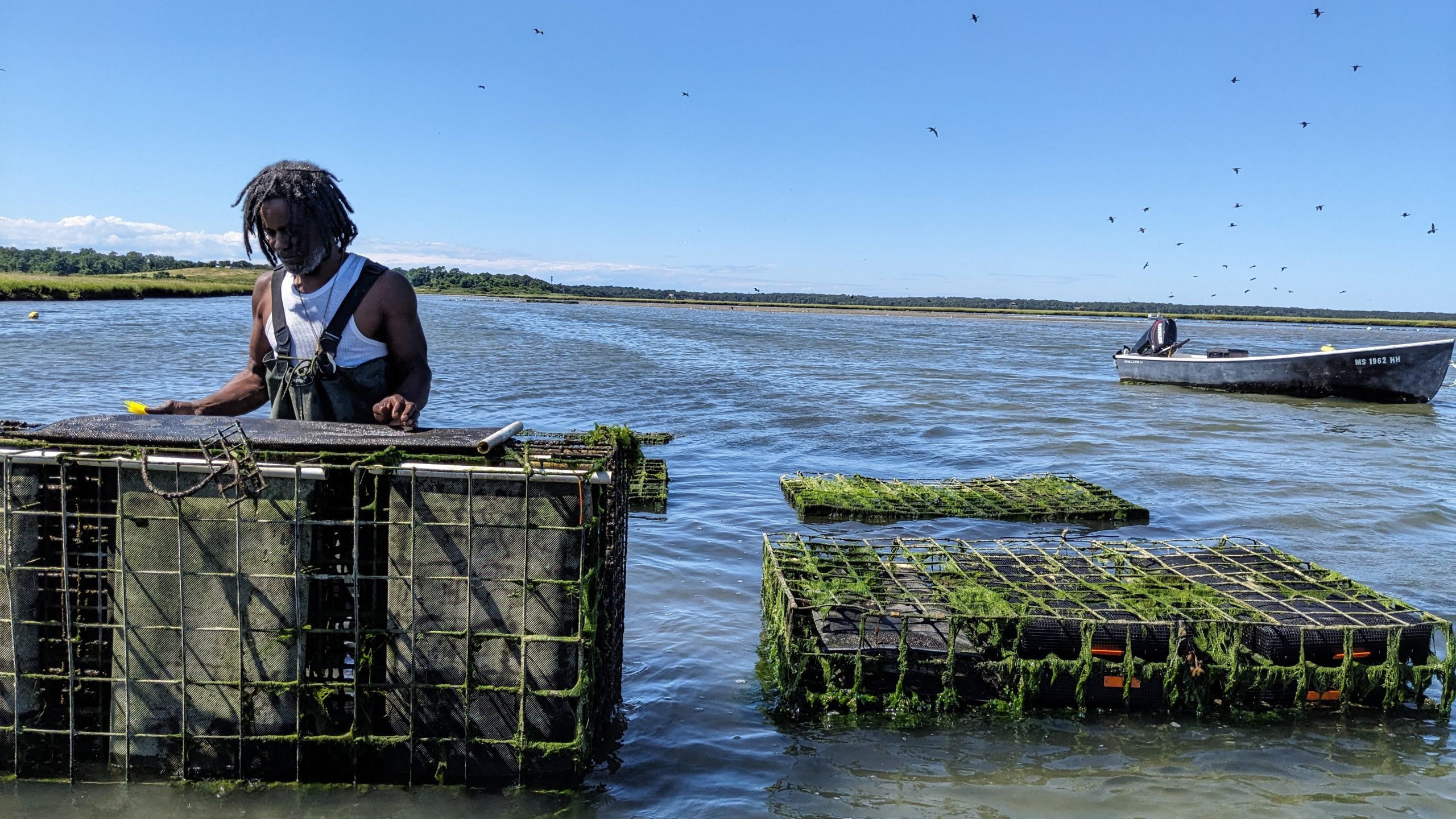
While he had a lot of experience working on the water as a marine carpenter, Adrian admits that before the internship, he didn't know anything about growing oysters. When he was finally able to apply his training to actual work on a farm, Adrian laughingly says he thought: “I am screwed!” adding, “I mean, it was a lot the first couple of days. At the exact same time, I was like, bring it on. I can do this.”
Now, a couple of months into his partnership with Todd, Adrian is in the groove of the work. “I'll find myself out here through two tide cycles, not even thinking. I'm just working, you know, I set a goal in my head, and I don't leave until I reach that goal,” he says. “Sometimes it's an easy goal, sometimes a hard goal, you know?”
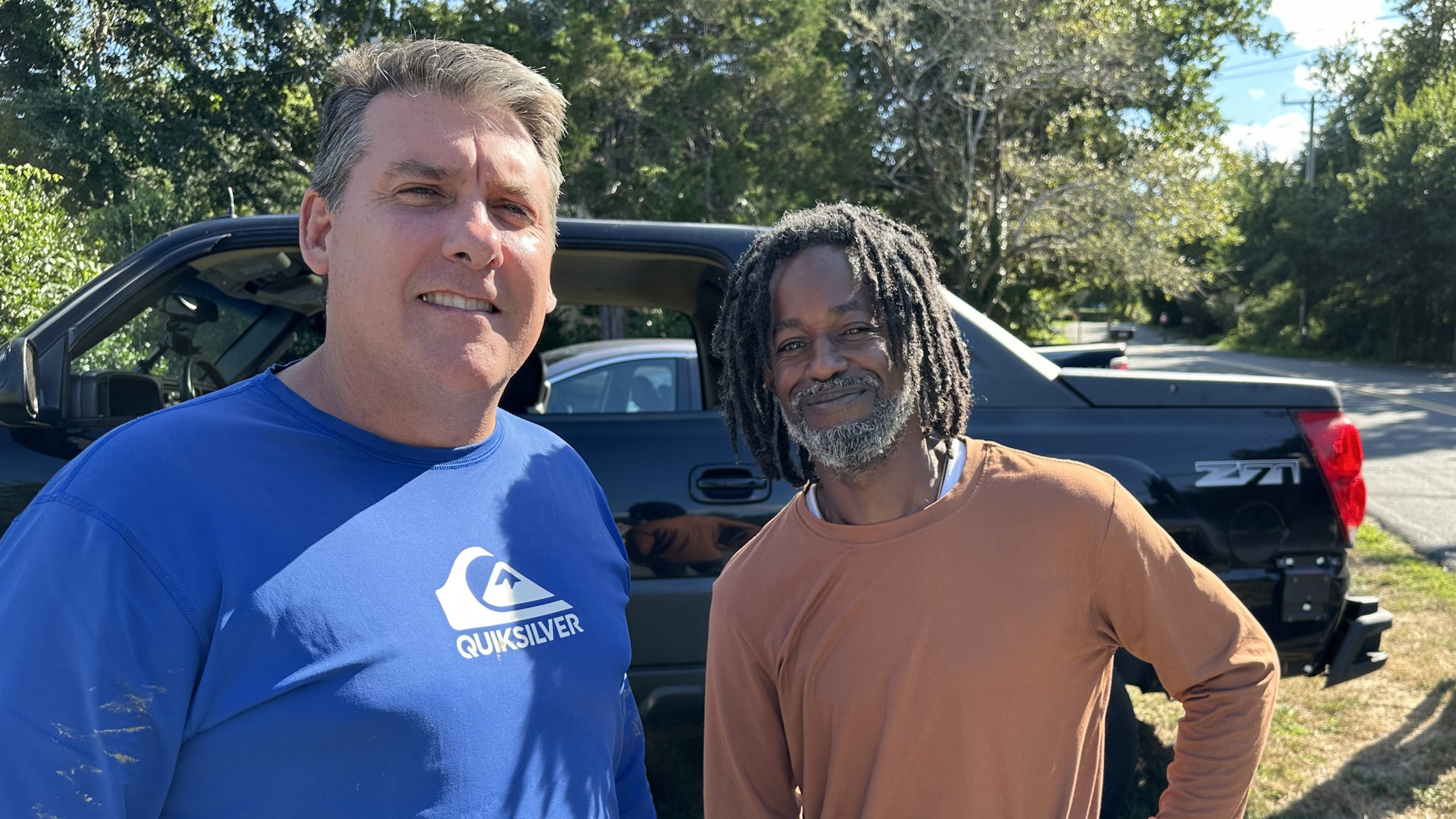
For Todd, there seems no doubt that he’s found the right partner. “That’s my guy, right there,” he says, noting that he and Adrian have expanded the farm from 40,000 oysters in the water to 200,000. “The one question I had for him -- I think I asked him six, seven, 10 times – was ‘Are you sure you want to do this? Really sure?’ Because for a lot of people, it's a very romantic image, you know, but It's a lot of hard work.”
Danny adds: “I think the goal of the internship, in some ways, was to ask that question, ‘Are you sure?’ Because, it's not easy work. By doing the rotations and by providing the support that we could, the goal was to get people to ask and answer that question -- Are you sure? -- without putting too much of the risk on the growers only to have somebody just walk away, which happens fairly often in this industry.”
After their training and rotations, two other recruits have been placed in six-month internships: Aydan Craveiro is working with the Town of Barnstable shellfish propagation program and Alicia Perez is working at Dale Leavitt’s Blue Stream Aquaculture farm in Fairhaven.
The Sea Grant teams are discussing potential next steps for the program and grappling with all the challenges –especially housing and transportation issues – that would need to be resolved if the program continued.
For Adrian and Todd at Stony Island Farm, there’s lots of room for growth. The farm can hold up to a million oysters, so they are already talking about expansion, the potential for additional partners, and the possibility of venturing into retail sales.
“The goal of the internship program was to match shellfish growers in need of farmhands with workers interested in careers on the water,” says Josh. “Adrian and Todd’s partnership is an unexpected but happy outcome. The program came around at the right time for them both.”
Images from the Aquaculture Internships for Massachusetts Program

